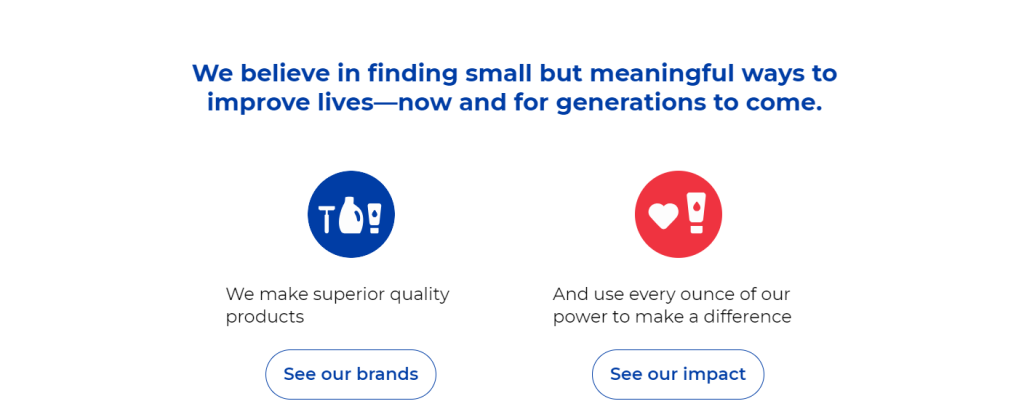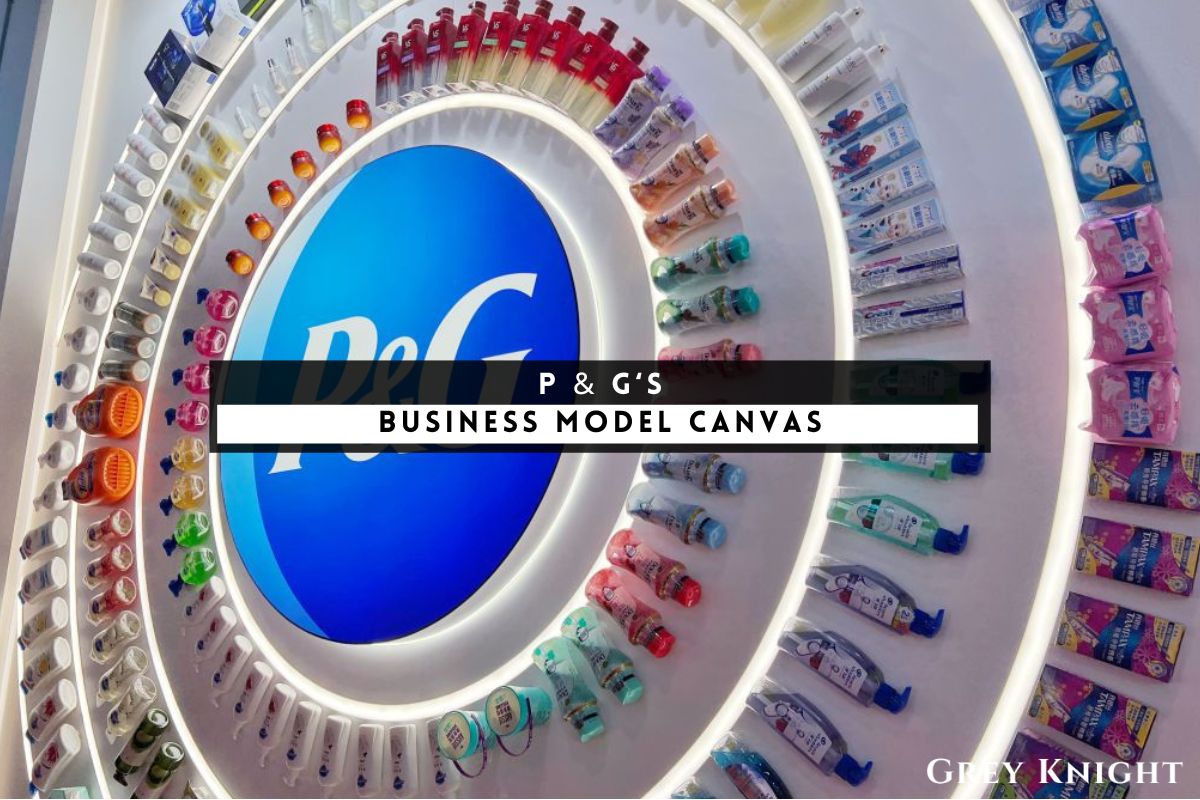Table of Contents
ToggleA Brief History of P&G
The Procter & Gamble Company, also known as P&G, was founded in 1837 by William Procter and James Gamble in Cincinnati, Ohio. The company began as a soap and candle manufacturer and quickly became successful due to its focus on quality and innovation. Procter & Gamble’s early products included Ivory soap and their trademarked star logo.
In the late 1800s, P&G began to expand its product line and entered the washing powder market with the introduction of “Ivory Snow” in 1879, which was the first synthetic detergent. The company continued to grow and diversify its offerings, adding products such as Crisco shortening, Tide laundry detergent, and Pampers diapers.
Throughout the 20th century, P&G continued to expand internationally and innovate with new products and brands. The company also became known for its marketing and advertising strategies, such as the creation of radio and television commercials for its products.
Today, The Procter & Gamble Company is a multinational consumer goods corporation with a wide range of products in various categories including personal care, grooming, beauty, and household care. With a long history of success and innovation, P&G remains one of the world’s leading consumer goods companies.
Who Owns P&G?
The Procter & Gamble Company is owned by a wide range of institutional and individual shareholders. The top 10 shareholders of Procter & Gamble as of 2023 are:
1. The Vanguard Group, Inc.
2. BlackRock, Inc.
3. State Street Corporation
4. Capital Research Global Investors
5. Wellington Management Company, LLP
6. Northern Trust Corporation
7. Geode Capital Management, LLC
8. Bank of America Corporation
9. Morgan Stanley
10. Fidelity Management & Research Company
These shareholders hold significant stakes in the company and play an important role in its ownership structure.
P&G Mission Statement

The Procter & Gamble Company’s mission statement is to provide branded products and services of superior quality and value that improve the lives of the world’s consumers. As a global leader in consumer goods, P&G is committed to sustainability, innovation, and diversity, and strives to make a positive impact on communities and the environment. The company is dedicated to delivering trusted brands that meet the needs and preferences of consumers around the world while ensuring the well-being and satisfaction of its employees and stakeholders.
How P&G Makes Money?
The Procter & Gamble Company operates on a business model that centers around the production and sale of consumer goods. The company makes money by selling a wide range of products, including health and hygiene items, cleaning products, and personal care items. Its revenue stream is derived from the sales of these products to consumers worldwide through various channels, including retail stores, e-commerce platforms, and direct-to-consumer sales. Additionally, Procter & Gamble generates revenue through strategic partnerships with retailers and other businesses, as well as through advertising and marketing services. Overall, the company’s business model is focused on delivering high-quality consumer goods to market and effectively reaching and satisfying consumer demand, thereby driving its revenue and profitability.
P&G’s Business Model Canvas
The Business Model Canvas is a strategic management tool that provides a visual representation of a company’s business model. It identifies the key elements that make up a business and helps to understand how these elements are interconnected. The 9 subheadings in the Business Model Canvas are Customer Segments, Value Propositions, Channels, Customer Relationships, Revenue Streams, Key Resources, Key Activities, Key Partners, and Cost Structure.
Customer Segments:
1. Consumer Goods: The Procter & Gamble Company caters to various consumer segments, including individuals, households, and businesses.
2. Demographic Segmentation: The company targets different demographics such as age, gender, income level, and lifestyle preferences.
3. Geographic Segmentation: P&G serves customers in various regions and countries around the world.
Value Propositions:
1. Brand Portfolio: P&G offers a wide range of high-quality and trusted brands that cater to different consumer needs.
2. Innovation and Quality: The company is known for its innovative products and commitment to quality and safety.
3. Customer Satisfaction: P&G aims to meet customer needs and offer products that enhance their lives.
Channels:
1. Retail Distribution: P&G products are distributed through various retail channels, including supermarkets, convenience stores, and online retailers.
2. Direct-to-Consumer: The company also sells products directly to consumers through its own e-commerce platforms.
3. Business-to-Business: P&G has partnerships with businesses for bulk sales and distribution.
Customer Relationships:
1. Marketing and Advertising: P&G engages with customers through marketing and advertising campaigns to build brand loyalty.
2. Customer Support: The company offers customer support services to address concerns and inquiries.
3. Loyalty Programs: P&G may offer loyalty programs to reward and retain customers.
Revenue Streams:
1. Product Sales: The primary source of revenue for P&G comes from the sales of its diverse product portfolio.
2. Licensing and Franchising: The company also generates revenue through licensing its brands and franchising opportunities.
3. Subscription Services: P&G may offer subscription services for certain products, creating a recurring revenue stream.
Key Resources:
1. Brand Portfolio: P&G’s diverse brand portfolio is a key resource in reaching different customer segments.
2. Research and Development: The company invests in R&D to innovate and develop new products.
3. Manufacturing Facilities: P&G has production facilities worldwide to manufacture its products.
Key Activities:
1. Product Development: P&G continuously innovates and develops new products to meet customer needs.
2. Marketing and Advertising: The company invests in marketing and advertising activities to promote its brands and products.
3. Supply Chain Management: P&G manages a complex supply chain to ensure products reach customers efficiently.
Key Partners:
1. Suppliers: P&G collaborates with suppliers to source raw materials and components for its products.
2. Retail Partners: The company works with retail partners to distribute and sell its products.
3. Research Institutions: P&G partners with research institutions to develop and test new products and technologies.
Cost Structure:
1. Production Costs: This includes expenses related to manufacturing, packaging, and quality control.
2. Marketing Costs: P&G incurs costs for advertising, promotional activities, and market research.
3. Distribution Costs: This includes expenses related to transportation, warehousing, and logistics.
The P&G’s Competitors
The Procter & Gamble Company (P&G) is a global consumer goods company that competes in various markets, including personal care, household, and healthcare. Its top competitors include Unilever, Kimberly-Clark Corporation, Colgate-Palmolive Company, Johnson & Johnson, and The Clorox Company. These companies also produce a wide range of consumer products and are known for their innovation, brand presence, and market share in the industry. P&G faces tough competition from these companies in its efforts to maintain its position as a leading global consumer goods company.
P&G SWOT Analysis
Strengths:
1. Strong brand portfolio including well-known and trusted brands
2. Global presence and distribution network
3. Robust research and development capabilities
4. Diversified product offerings across multiple consumer goods categories
Weaknesses:
1. Dependence on mature and competitive markets
2. Vulnerability to changes in raw material prices
3. Limited innovation compared to smaller competitors
4. High reliance on retailers for sales
Opportunities:
1. Growing demand for environmentally-friendly and sustainable products
2. Expansion into emerging markets with rising disposable incomes
3. E-commerce and direct-to-consumer sales opportunities
4. Potential for acquisitions to enter new product categories or markets
Threats:
1. Intense competition from both large and small players
2. Economic instability and currency fluctuations
3. Changing consumer preferences and trends
4. Regulatory and legal challenges in different markets
Concluding Analysis
In conclusion, The Procter & Gamble Company has established itself as a leader in the consumer goods industry with its innovative business model and diverse product portfolio. As an analyst, I believe that the company’s emphasis on efficiency, sustainability, and consumer-centric approach will continue to drive its success in the future. With a strong emphasis on digital innovation and a commitment to meeting the evolving needs of consumers, The Procter & Gamble Company is well-positioned to maintain its position as a top player in the industry. I am confident in the company’s ability to adapt and thrive in the ever-changing business landscape, and I look forward to seeing its continued growth and success.
Additional Resources
To keep learning and advancing your career, we highly recommend these additional resources:
Business Model Canvas of The Top 1,000 Largest Companies by Market Cap in 2024
A List of 1000 Venture Capital Firms & Investors with LinkedIn Profiles
Peter Thiel and the 16 Unicorns: The Legacy of Thiel Fellowship












